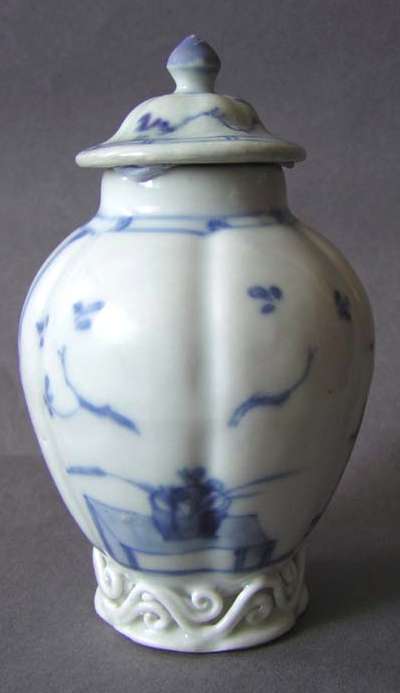
Tea canister, often incorrectly called tea caddy. Chinese export porcelain from early 18th century, wucai. Enamel part of the decoration lost
Photo courtesy of Tommy Eklöf, 2012
Air tight containers for storing tea. Used in China to store tea sent up to the Emperor as Tribute from provinces known for its tea. In use in China from the Song dynasty. Became most fashionable in Europe with the introduction of the new fashion for hot drinks, including tea, following the visit to Paris of the Ambassador of Siam in the early 18th century. Small and decorative Tea canister are usually found in porcelain or various metals from the 18th century onwards. Larger examples for export and shipping often in pewter, sometimes fitted with wooden boxes to contain several.
Traditionally, the term "tea caddy" refers to the container or box designed to hold tea, whether it's a wooden box or a porcelain container. When the box contains multiple small porcelain flasks for different types of tea, it's most accurate to refer to the box as the "tea caddy", while the individual flasks or containers inside are more precisely described as "tea canisters" or "tea jars."
However using "tea caddy" specifically for the box, and terms like "tea canisters" or "tea jars" for the flasks, maintains clarity and avoids confusion.
A